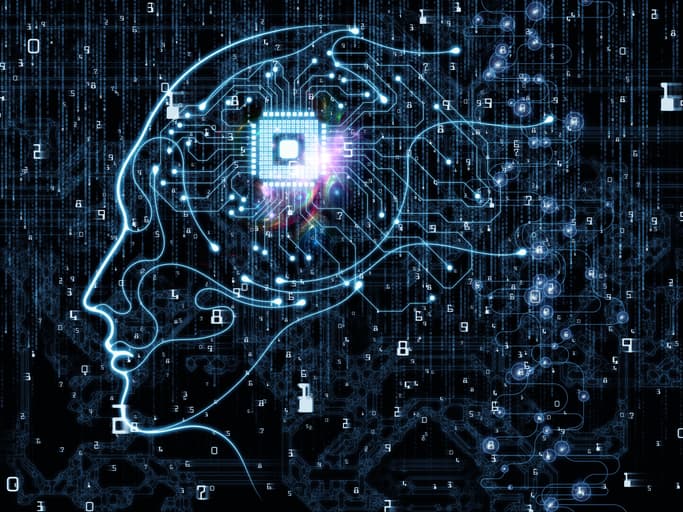By Henrik Christensen, PhD, Qualcomm Chancellor's Chair in Robot Systems, Director Contextual Robotics, UC San Diego
For some, investing in artificial intelligence feels like banking on the unknown. The concepts behind AI can range from sounding futuristic to downright fictional. And yet, when you break down AI and explore the core technologies that drive it, look at what they are delivering today, and then consider what they are capable of delivering tomorrow, it’s suddenly quite easy to grasp how AI is changing the world around us. It is these facts that make investing in AI a not-to-be-missed investment opportunity.
Back in 2009, I was the main person behind the formulation of the US National Strategy for Robotics. At the time, as the strategy worked its way through Congress and to the White House, the conversation about why robotics mattered was an easy one. In the key areas of application—healthcare, defense, manufacturing, and logistics—it was simple to understand the physical applications of robotics in the real world. And yet, it was clear even then that robotics was somewhat limited in its application because, by its nature, robotics is restricted to interactions with the physical world.
AI is a completely different story.
Since 2009, our world has been fully transformed by one thing: Big Data. AI enables us to glean value from masses of information by finding patterns within the data to elevate the decision-making process, often exponentially. The result is a new wave of AI-driven decision-making that is adding value in nearly every aspect of our lives. AI is helping retailers make better customer recommendations, customize their offerings, and improve product design, delivery, and desirability. AI is helping medical professionals save lives by enabling them to diagnose and treat diseases in the earliest stages—often before symptoms occur—and compare millions of test results to quickly identify effective treatments. On Wall Street, AI is helping fund managers find the best opportunities, using data to quickly analyze everything from macroeconomic and statistical models to industry and geographical trends. AI is giving lawyers and judges the ability to sift through information at lightning speed to make better, more informed decisions. In the oil and gas industry, AI is making it possible to drill deeper, improve rig safety, and even identify system failures before they create mechanical failures that can threaten workers and the environment.
What is spectacular is that this new level of decision-making would not be possible without the use of artificial intelligence and these core technologies that are driving faster, more effective memory processing, communication, and interactions:
Big Data Analytics
Big data analytics is used to examine enormous data sets to discover patterns, correlations, market trends, customer preferences, and other often hidden information to inform the decision-making process. Using predictive models, statistical algorithms, and what-if analyses, big data analytics helps companies identify new revenue opportunities, create more effective marketing, deliver better customer service, improve operational efficiencies, and drive competitive advantage.
Cloud technologies
Cloud technologies enable companies to store unlimited amounts of data and balance workloads within that data. Even more, AI and the Cloud share a fascinating symbiotic loop: the Cloud serves as the primary source of information that feeds AI networks, and AI networks continuously feed the Cloud with even more data. Already a key driver of competitive advantage and a coveted differentiator, Cloud platforms support some of the most important foundations of AI, such as cloud computing, machine learning, language processing, and more.
Cognitive computing
Cognitive computing came into public awareness when IBM’s Watson computer famously beat two human champions on Jeopardy! and claimed the $1 million first-place prize. It was a brilliant marketing campaign to bring awareness of the power of cognitive computing to the public and, even more importantly, to the leaders of industry. Today, cognitive computing is used to accelerate processes such as reasoning, natural language processing, speech recognition, object recognition, and dialog generation. According to research firm IDC, worldwide spending on cognitive and AI systems is expected to increase by more than 50% by 2021, taking total spending on cognitive computing from $12B in 2017 to $57.6B by 2021.
Network security
Network security is more important than ever in this age of cyber attacks and data breaches, resulting in estimated double-digit growth from 2018 to 2023 and leading to global revenue of $193.76B by 2023. As businesses strive to protect the personal and financial information of their customers and, indeed, their own reputations and futures, they rely on AI to support identity and access management, encryption, governance, risk and compliance, unified threat management, and security information and event management. Encryption capabilities are in particularly high demand to protect information stored on consumer devices and to use that information securely in the Cloud.
Semiconductors
Semiconductors are a key component of today’s digital capabilities, enabling every computer and electronic device. While semiconductors have been around for decades, AI is driving new semiconductor designs and capabilities. Using the power of machine learning and deep learning, industry leaders are finding new ways to speed up performance and reduce power by processing data as patterns rather than individual bits. This progress is the key to delivering everything from quantum computers to fully autonomous vehicles.
Investors who are keen to invest in the physical application of technology—warehousing, autonomous vehicles, consumer robotics—have relied on the ROBO Global Robotics & Automation Index to provide that exposure for more than five years. As the exposure to AI continues to grow within the index, investors who are seeking greater exposure into this fast-growing world of AI will find the ROBO to be a unique option that positions them to reap the potential rewards of this not-to-be-missed investment opportunity for decades to come.





